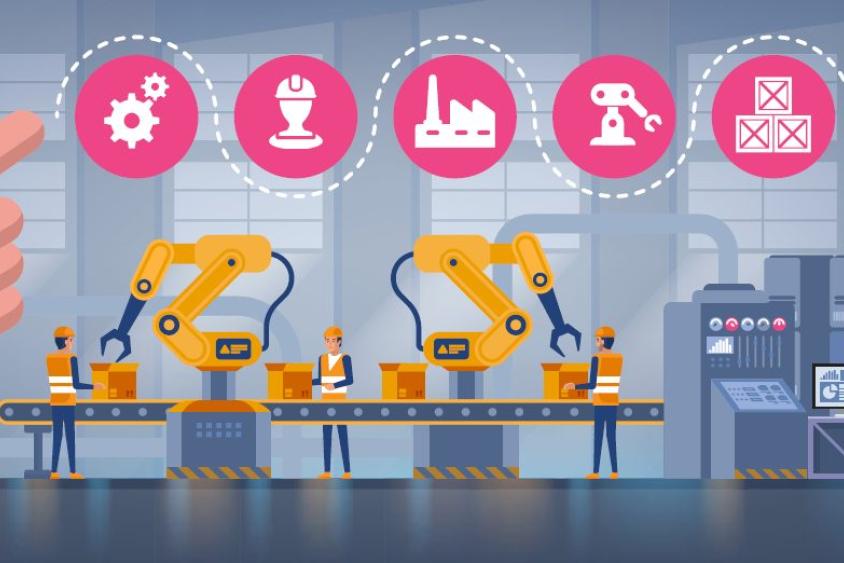A ‘Bilingual’ Approach to Smart Factories

The rise of smart manufacturing demands experts who can think fluently in both traditional physical systems and emerging digital technologies. Success in modern factories is no longer just about managing materials and machines. Increasingly, it hinges on harnessing the power of data, analytics, algorithms and simulations to drive efficiency and innovation.
To thrive in this evolving landscape, manufacturers must adopt a “bilingual” approach—integrating expertise in manufacturing methods and digital technologies, including data science, instrumentation and automation. This isn’t simply adding sensors to existing processes but about developing a deep contextual understanding of how manufacturing works at every level—from designing connected products to optimizing factory operations and supply chains.
Smart manufacturing extends beyond the factory floor. Many manufacturers are now designing sensor-embedded, connected products to remain competitive and meet evolving customer expectations. While not every product benefits from added connectivity, many have achieved widespread success. Smart watches, thermostats and doorbells have become indispensable, while in industrial settings, smart pumps and connected machinery are transforming operations with real-time monitoring and proactive maintenance.
A bilingual mentality emphasizes functionality over novelty, balancing digital sophistication with durability and fully integrating smart capabilities to help solve real problems. This approach to manufacturing pairs deep expertise in physical processes (such as milling, extrusion and mixing) with sophisticated data collection and analysis. At the machine level, this essentially means that manufacturers must adopt or build their own smart products to improve their processes. Manufacturers have always sought sharper blades, stronger materials and more precise controls. A sensor that can detect a subtle change in temperature or vibration isn’t that different from these other improvements. But managing digital tools does require a level of IT expertise that typically isn’t found on the shop floor. Partnering with experts who are as comfortable with algorithms as they are with assembly lines, manufacturers can reap the benefits of both traditional and digital tools.
While individual smart machines can deliver significant improvements, the true power of analytics emerges at the factory level where multiple digital systems converge to provide meaningful insights into worker safety, operational efficiency and resource utilization. Digitization enables real-time data collection on inventory, production rates and equipment performance. Predictive analytics help managers fine-tune schedules, optimize maintenance timing and prevent costly downtime. The goal is to augment decision-making with actionable insights.
The COVID-19 pandemic reinforced what manufacturers have always known: Supply chains are the key to making everything else work. These complex, interconnected systems require constant monitoring; one missing piece can delay product shipments indefinitely. Manufacturers must keep a close eye on factors ranging from cold chain requirements for pharmaceuticals to cross-border logistics and extreme weather events. Real-time data and predictive insights from smart systems can provide the visibility needed to keep supply chains moving. As technology improves, so too do customer expectations. Just look at the logistical near perfection achieved by a company like Amazon, which can get many of its products in the hands of customers within just a few hours. Not every organization will be able to hit this target, but they can deploy their own versions of the systems that make such precision possible.
Smart manufacturing isn’t a great departure from traditional methods. The introduction of smart sensors and analytic tools is a natural evolution for data improvement processes. In the past, we’ve called these efforts “feedback control” or “physical process control.” Today, we use the term data science. By employing bilingual thinking, manufacturers can amplify traditional approaches with powerful new tools, leading to unprecedented insights and improvements.
Source: Advanced Manufacturing


